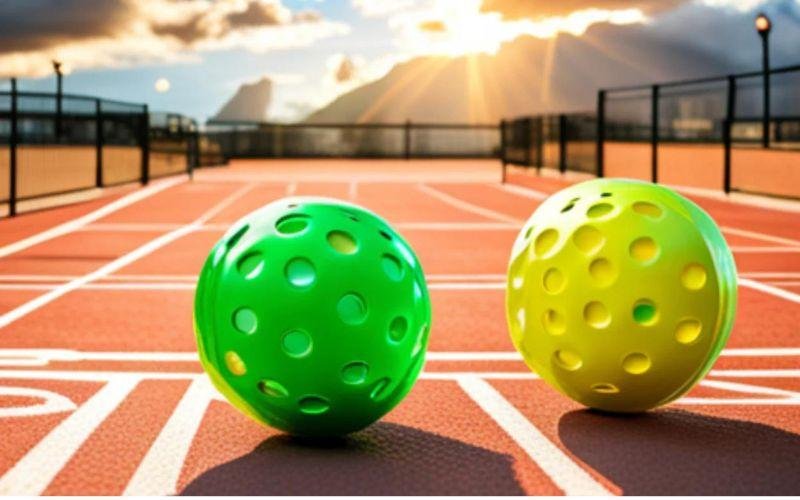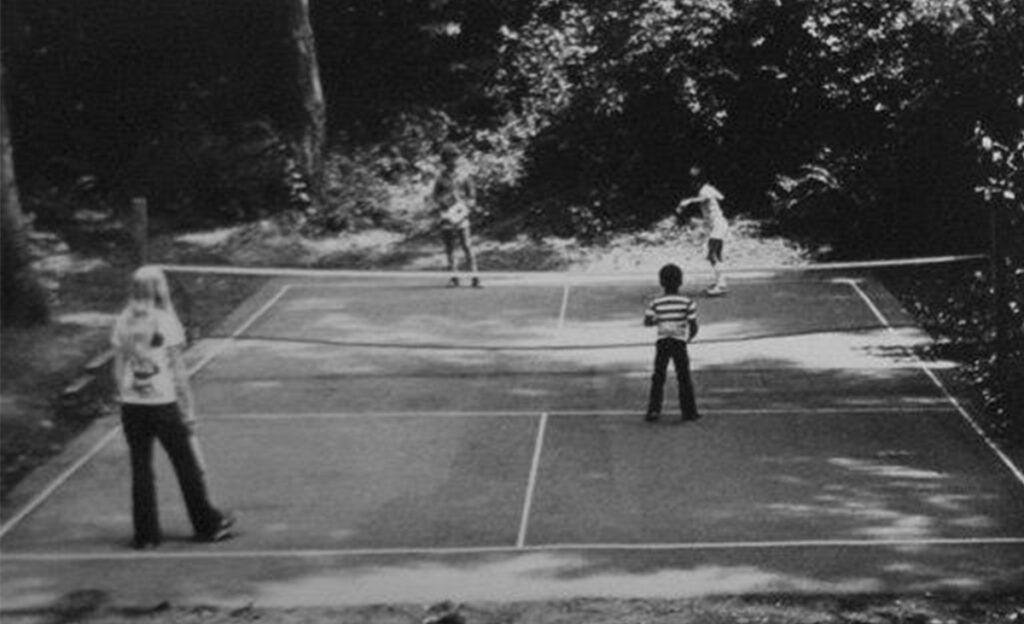Blog
when was pickleball invented

In the sun-drenched backyards and community courts across America, an engaging pastime has emerged, capturing the hearts of players of all ages—pickleball. A blend of badminton, tennis, and table tennis, this unique sport has seen a meteoric rise in popularity in recent years, drawing in both casual participants and fiercely competitive athletes. But amid the paddles and whiffle balls, a question lingers: when was pickleball invented? Dive with us into the origins of this delightful game, exploring the circumstances that brought it to life and the cultural shifts that have propelled its ascent to becoming one of the fastest-growing sports in the country.
The Origins of Pickleball and Its Founders
Pickleball, with its delightful combination of tennis, badminton, and ping pong, was created in the summer of 1965 on Bainbridge Island, Washington. The sport emerged when three fathers—Joel Pritchard, Bill Bell, and Bob Hoke—sought a way to entertain their children during a family gathering. With an old badminton court and improvised equipment, they crafted the initial rules, using ping pong paddles and a perforated plastic ball. As they began to play, the game quickly evolved, leading to various modifications that would lay the foundation for what we now recognize as pickleball. The whimsical name reportedly stems from the Pritchard family dog, Pickles, who would chase after errant balls.
Over the years, pickleball flourished from its modest beginnings into a widely embraced sport, characterized by its engaging gameplay and accessibility to players of all ages. The original trio’s commitment to promoting the game led them to formally establish the Pickleball Association in 1972, which helped standardize the rules and increase awareness. The sport’s growth was further accelerated by the introduction of additional equipment and local clubs, making it a staple in community centers across the United States. Today, it stands as a testament to the creativity and collaboration of its founders, enveloping players in a spirit of fun and friendly competition.

The Evolution of Pickleball Across the Decades
The journey of pickleball began in 1965 on Bainbridge Island, Washington, when three friends—Joel Pritchard, Bill Bell, and Barney McCallum—concocted the game as a summertime pastime. As the game evolved, it adopted elements from various racquet sports, combining aspects of tennis, badminton, and ping pong. By the 1970s, the establishment of standardized rules and the creation of the first official pickleball paddles marked a significant turning point in its evolution. This period saw the sport grow from informal backyard games to organized play, paving the way for tournaments, leagues, and a burgeoning community of dedicated enthusiasts.
By the 1980s and 1990s, pickleball began to transcend local popularity and entered the national sporting landscape, particularly in the United States. Key developments during this time included:
- The formation of the USA Pickleball Association in 2005.
- Increased visibility through local and national tournaments.
- Growing acceptance within community centers and schools.
As the new millennium dawned, the sport experienced an explosive rise in popularity, particularly among older adults seeking an engaging, low-impact activity. Today, pickleball is enjoyed by people of all ages, with a diverse array of players contributing to its vibrant culture. The game’s adaptability and welcoming nature have solidified its status as one of the fastest-growing sports in the country.

Key Milestones in the Rise of Pickleball Popularity
The journey of pickleball from its humble beginnings to becoming one of the fastest-growing sports in America encompasses several significant milestones. Invented in 1965, pickleball was initially created by three dads—Joel Pritchard, Bill Bell, and Barney McCallum—on Bainbridge Island, Washington, as a backyard game for their children. Its unique combination of tennis, badminton, and ping-pong captured the attention of families, leading to the establishment of the first pickleball court. In 1972, the official rules were codified, paving the way for organized play and reflecting its growing appeal across various demographics.
As the sport evolved, it saw a remarkable rise in popularity, particularly from the late 20th century to the present day. In 1984, the first pickleball tournament was held, attracting a wave of enthusiasts and marking the beginning of competitive pickleball events. By the early 2000s, its recognition soared, with the USA Pickleball Association founded in 2005 to oversee the sport’s development. Notably, in recent years, interest has surged in communities across the nation, with an estimated 4.8 million Americans participating in 2021 alone, demonstrating the sport’s appeal to a diverse audience. The growth of indoor and outdoor facilities has also played a significant role in this rise.
| Year | Milestone |
|---|---|
| 1965 | Invention of Pickleball |
| 1972 | Official Rules Established |
| 1984 | First Tournament Held |
| 2005 | USA Pickleball Association Founded |
| 2021 | 4.8M Players in the U.S. |

Exploring the Future of Pickleball: Trends and Opportunities
The evolution of pickleball has reached a transformative crossroads, presenting a plethora of trends that are reshaping the game for future enthusiasts. As its popularity soars, one significant trend is the integration of technology into the sport. From smart paddles that measure swing speed and ball impact to apps that enable players to track their performance and connect with others, technology is enhancing the playing experience. This shift invites new audiences and players, particularly younger generations, to engage with pickleball in innovative ways.
Moreover, the rise of organized leagues and tournaments is creating new opportunities for competition and community building. Cities across the country are investing in dedicated pickleball facilities, and organizations are forming to host events tailored to various skill levels. This not only cultivates a sense of belonging among players but also promotes the sport as a viable recreational and competitive outlet. Key opportunities include:
- Facility Development: Construction of dedicated indoor and outdoor pickleball courts.
- Coaching Programs: Establishing structured training for all skill levels.
- Merchandising: Creating branded apparel and equipment for players.
- Media Coverage: Increased visibility through streaming platforms and social media.
| Trend | Opportunity |
|---|---|
| Technological Integration | Enhanced performance tracking |
| Community Leagues | Pooled resources for local tournaments |
| Health and Wellness Focus | Programs promoting physical activity |
Q&A
Q&A: The Origins of Pickleball
Q: When was pickleball invented?
A: Pickleball was invented in 1965. It emerged from a creative blend of tennis, badminton, and ping pong, all thanks to the innovative minds of three fathers: Joel Pritchard, Bill Bell, and Barney McCallum.
Q: What inspired the creation of pickleball?
A: The game’s inception was born out of a desire to entertain bored kids during a summer weekend. As the fathers searched for a way to engage their families, they improvised a game using an old badminton court, wooden paddles, and a perforated plastic ball.
Q: Why is it called “pickleball”?
A: The name “pickleball” is often linked to Pritchard’s dog, Pickles, who enjoyed chasing after the ball. However, it’s also said that the term reflects the “pickle boat” in crew, which is a combination of players from different teams. The true origin remains a delightful topic of debate!
Q: Where was pickleball invented?
A: The game originated on Bainbridge Island, just a ferry ride away from Seattle, Washington. The beautiful backdrop of the Pacific Northwest provided a picturesque setting for the game’s debut.
Q: How did pickleball gain popularity after its invention?
A: After its creation, pickleball gradually evolved from a family pastime to a community sensation. It gained traction in schools and community centers throughout the Pacific Northwest in the 1970s and soon began spreading across the United States, especially in retirement communities where it was embraced for its accessibility.
Q: When did pickleball become an organized sport?
A: In 1976, the first official pickleball tournament was held, marking the game’s transition into an organized sport. By 1984, the USA Pickleball Association was established to promote and govern the sport, paving the way for its development.
Q: What is the current state of pickleball today?
A: Today, pickleball is thriving! With millions of players across various age groups, the sport has gained international recognition and is continuing to grow, fueled by its inviting nature and social aspect. The invention that began as a simple family activity has blossomed into a burgeoning phenomenon!
Key Takeaways
the intriguing journey of pickleball, from its humble beginnings on a summer day in 1965 to its rise as one of the fastest-growing sports today, reflects the beauty of innovation in the world of recreational activities. As we paddle through this unique blend of tennis, badminton, and ping pong, it’s clear that pickleball’s appeal lies not only in its simplicity but also in its ability to bring people together, regardless of age or skill level. So, whether you’re a seasoned pro or a curious newcomer, remember that every game played today carries forward the legacy of those first tentative serves on Bainbridge Island. The next time you hear the satisfying thwack of a paddle hitting a ball, take a moment to appreciate the rich history behind this beloved pastime and the community that continues to grow around it. Who knows what exciting chapters lie ahead in the ever-evolving story of pickleball?












